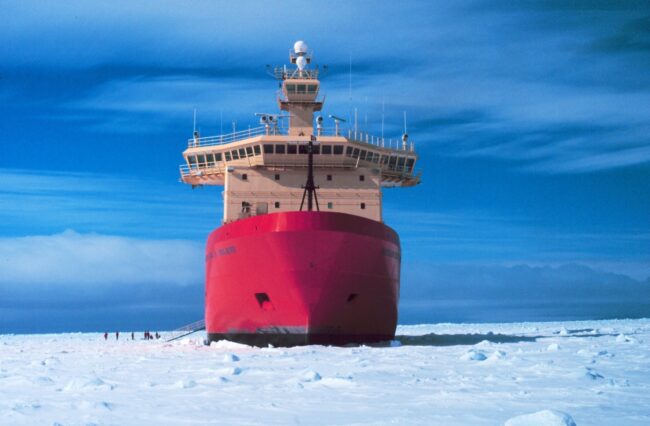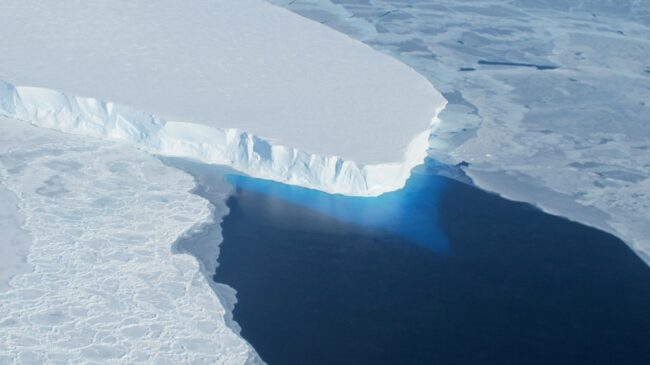On July 28, 170 researchers sent a letter to the National Science Foundation (NSF) and Congress after NSF’s 2026 budget request included plans to end its lease of a U.S. research vessel in the Southern Ocean near Antarctica.
The Nathaniel B. Palmer has been in operation for over 30 years and is the only U.S. research vessel icebreaker—a uniquely designed ship that navigates through frozen waters and can perform long-term scientific missions. The letter’s signatories, including 10 from Columbia University, are urging a reconsideration of this decision in the name of scientific progress.

“In general, the research vessel is necessary for biological research, chemical research, geological research and a whole spectrum of the kinds of research that we do around Antarctica,” said Robert F. Anderson, who studies chemical oceanography, marine geochemistry and paleoclimatology at Lamont-Doherty Earth Observatory. (Lamont is part of the Columbia Climate School.)
Anderson, who signed the letter, attributes much of successful American Antarctic research to Palmer’s operations, particularly when it comes to sea ice.
“The only way to study sea ice is with a vessel,” he said. “You can’t do it from land. The ice shelf is the termination of the glacier. If you want to see how the ice shelves are responding to climate, or if you want to study how the ice shelves affect the supply of nutrients to the marine ecosystem, you need to do that with a ship,” Anderson said.
The authors of the letter claim there are no alternative methods to the use of icebreakers. They wrote that “even as automation and remote observations have increased our observational capabilities in this harsh region of the world, there’s no replacement for a dedicated research vessel that can access remote sea ice-covered regions of Antarctica and that allows sampling of the full depth of the ocean and coastal regions on land.”
Anderson also noted the importance of continuing research in the Southern Ocean, stating that “the ocean around Antarctica is the most important region in the world for the exchange of carbon dioxide between the ocean and the atmosphere.” NASA studies have found that the Southern Ocean absorbs more carbon dioxide than it releases, making this area a critical carbon sink. The Thwaites Glacier, one of the most rapidly melting glaciers in the world, resides in this region as well, and much of the research on it came from Palmer. Scientists have determined that warming water under the Thwaites ice shelf has fueled its melting and could contribute to intense global sea level rise.

Research in the Southern Ocean could therefore lead to important insights about climate change. But without an icebreaker vessel, Anderson is concerned the U.S. will fall behind.
“South Korea and China are right now ramping up their research around Antarctica. Britain and Germany and Italy are all maintaining a high level of research. I don’t know if the United States is a leader, but without a ship, the United States wouldn’t even be an important player in that research,” Anderson said.
“This decision forecasts the decline of an exceptional history of U.S. scientific contributions,” the letter states. “We urge reconsideration of the decision to terminate the lease of the RVIB [research vessel icebreaker] Nathaniel B. Palmer, and the continued forward-looking development of the next generation of Antarctic research vessels that will continue U.S. leadership, scientifically and geopolitically, in the high southern latitudes.”
If no changes are made to the decision, the lease is set to terminate in October.
“Not only has the Palmer been good, but it’s been better than any other ship option that we had,” Anderson said. “Just look at the track record. It’s been such a successful contribution to U.S. science that we’d be ashamed to lose it.”


